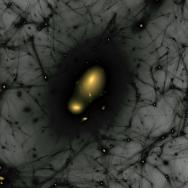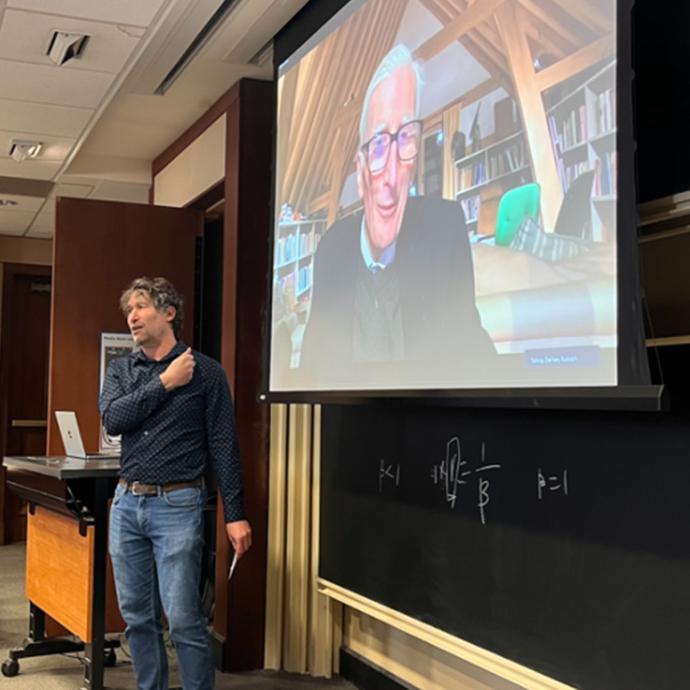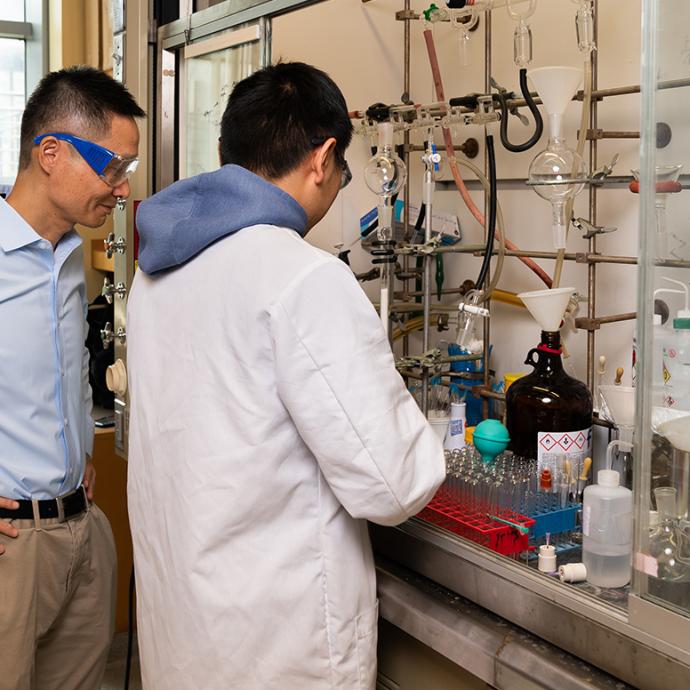Out in space, beyond the familiar confines of Earth’s physics, lie extraordinary phenomena: monstrous black holes, vast clouds that hide the birthplaces of stars, and gigantic clusters of galaxies. Such extreme conditions are hard to study, but they can hold the keys to understanding the evolution of the universe and of our own galaxy.
An international collaboration managed to recreate—for the first time in the laboratory—the growth of magnetic fields at extreme conditions similar to those in the hot plasma that fills clusters of galaxies. The group, co-led by the University of Rochester, the University of Oxford and the University of Chicago, reported their results in an article that appeared March 8 in the Proceedings of the National Academy of Sciences. The rapid amplification they found, which occurs via a phenomenon called the “turbulent dynamo,” exceeds theoretical expectations, and could help explain the origin of the present-day large-scale magnetic fields that are observed in galaxy clusters.
“Understanding how and at what rates magnetic fields are amplified at macroscopic scales in astrophysical turbulence is key for explaining the magnetic fields seen in galaxy clusters, the largest structures in the Universe,” said Archie Bott, postdoctoral research associate at Princeton and lead author of the study.
The experiments were carried out using lasers at the Omega Laser Facility of the Laboratory for Laser Energetics at the University of Rochester, where the team previously demonstrated experimentally the existence of the turbulent dynamo mechanism.
This time, they were able to create conditions similar to the hot, diffuse plasma of the intracluster medium—the space between galaxies in a cluster—in which the turbulent dynamo mechanism is thought to operate. This feat was accomplished with laser beams whose total power is equivalent to that of 10,000 nuclear reactors.
According to scientists’ models, the magnetic fields generated early in the universe are many orders of magnitude smaller than those seen today in galaxy clusters. One possible explanation is that motions in the plasma can pick up these weak “seed” fields and amplify them via stretching, twisting and folding the magnetic fields. The rate at which this amplification happens, the “growth rate,” differs according to how large the plasma motions are. Theory and simulations predict that the growth rate is large at the smallest spatial scales, but far smaller when it comes to the largest turbulent motions.
The experiments, however, demonstrated that this may not be the case: the turbulent dynamo phenomenon—when operating in a realistic plasma—can generate large-scale magnetic fields much more rapidly than theorists had predicted.












 —Prof. Chuan He
—Prof. Chuan He
